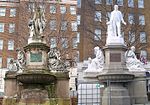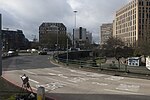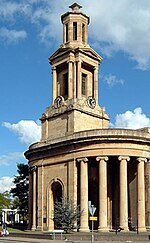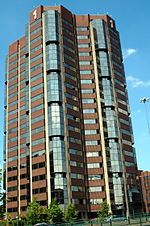St James's House, Birmingham
20th-century architecture in the United KingdomBuildings and structures completed in 1957EdgbastonGrade II listed buildings in BirminghamJohn Madin ... and 1 more
Office buildings in Birmingham, West Midlands

St James’s House is a Grade II listed office building in Birmingham, England. The 1950s building was designed for the Engineering and Allied Employer’s Federation by the local architect, John Madin, and built from 1955–1957. It is located at 16 Frederick Road, at its junction with St James Road (note spelling), in the Edgbaston district of the city. It is one, of the fourteen finest post-war offices designed by leading architects" listed by Historic England in January 2015. They noted the "bold, modern exterior" and an interior designed to "forge constructive relations between employers and their workforce".
Excerpt from the Wikipedia article St James's House, Birmingham (License: CC BY-SA 3.0, Authors, Images).St James's House, Birmingham
Frederick Road, Birmingham Ladywood
Geographical coordinates (GPS) Address Nearby Places Show on map
Geographical coordinates (GPS)
| Latitude | Longitude |
|---|---|
| N 52.4699 ° | E -1.9169 ° |
Address
Frederick Road 14
B15 1JD Birmingham, Ladywood
England, United Kingdom
Open on Google Maps







